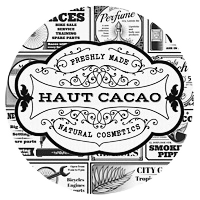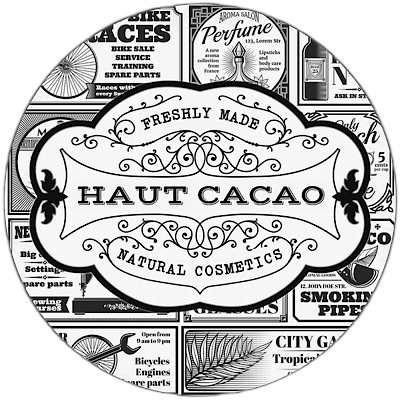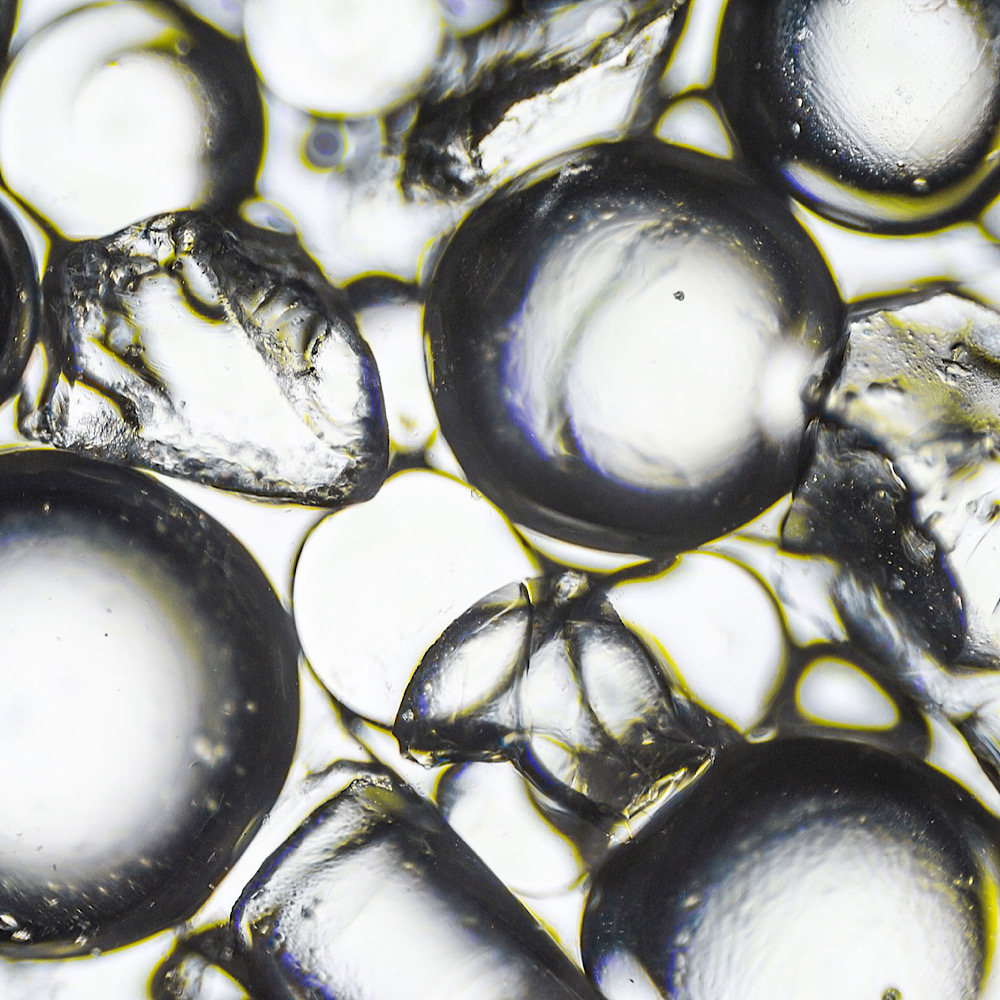No matter what your skin type, one of the ingredients I recommend avoiding is silica or silicone. Or silicones, I should say—because these slippery ingredients go under dozens of different names, with new compounds being developed all the time. That makes them hard to identify and even harder to avoid, as they’ve become the new normal in beauty formulations, from makeup to skincare to haircare. Spreading silicones all over your face and body may not be the best idea for a great complexion and overall health. Even silicone-based hair products can be bad news, if trace amounts are left on your skin.
-
Why beauty companies are really using silicones.
-
How silicones can affect your skin.
-
How to identify silicones on ingredient labels.
-
Where to consider eliminating silicones from your beauty routine.
-
Pressed powder production secrets.
Why Beauty Companies Use Silicones
Here’s why silicones have become so ubiquitous in beauty products:
They’re safe (sort of): Silicones are generally considered a low hazard for humans. However, according to Health Canada, some types of silicones (siloxanes) may be harmful to the environment and its biological diversity.
They’re smoothing: Silicones give products a silky, spreadable, luxurious texture. They fill in crevices to make skin look and feel smoother—which makes you think the product is “working,” even though it’s only a temporary, surface effect.
They’re water-resistant: Hydrophobic silicones form a seal over the skin, which allows companies to claim longer-lasting (24- to 48-hour) “hydration” benefits. The same ingredient family is behind sweat-resistant sunscreens, and most makeup-setting sprays.
They’re cheap: Let’s be real. This is the main reason why silicones are everywhere! Sadly, sometimes beauty companies care more about the bottom line than actually helping your skin. They’d rather use cheap, man-made plastics as fillers than formulate with more expensive raw materials that may have a shorter shelf life. But don’t assume this means only drugstore brands use silicones—they’re to be found in even the priciest lines, which is particularly outrageous.
Reasons to Avoid Silicones
I eliminated silicones from my routine a couple decades ago and my skin has improved so much! Here’s why you may wish to do the same:
Silicones Trap Debris in Your Pores – stretching pore walls
Your skin is a detoxification pathway, scalp included! Like plastic wrap, silicones form a barrier on top of your skin. That barrier can lock in moisture, yes, but it can also trap dirt, sweat, bacteria, sebum, dead skin cells and other debris along with it!
Silicones Can Cause Acne and Congestion
Prolonged exposure to oil, dead skin and bacteria underneath the semi-occlusive seal of silicones can lead to increased breakouts. If you are acne-prone, I consider silicones among the most important ingredients to avoid—maybe even THE most important.
Silicones can also be a culprit in under-the-skin clogs (a.k.a. congestion), even if you don’t develop full-blown acne. Just like elimination, the skin is a detoxification pathway that should not be blocked off.
Silicones Can Make Your Skin Dull and Dehydrated
Silicones could also be clogging your pores, but manifesting as dryness and dullness instead of acne. Not only do silicones prevent additional moisture from getting in, but the impacted materials can dehydrate your pores and throw your skin’s natural regulatory processes off-balance.
The result? Your skin becomes less able to shed dead layers and hydrate itself.
Silicones Interfere with Cell Renewal
Our skin renews itself every 28 days, whereby old cells are sloughed off and new cells make their way up to the surface. Silicones inhibit this process by slowing down the production of new cells and keeping dead cells stuck longer.
Impaired cell renewal could decelerate the improvement of conditions such as pigmentation, redness, fine lines and scarring!
Silicones Block Other Ingredients from Absorbing
If you are layering products (which most of us do), silicones can prevent them from doing their jobs properly.
Let’s say you use a silicone-based micellar water or serum. Any moisturizers or treatments you put on next would have a diminished ability to penetrate, rendering them less effective.
To be honest, I even suspect that silicones probably impede the absorption of beneficial ingredients within the same formula!
Silicones Are Difficult to Remove
The most common silicone, dimethicone, is extremely heavy and leaves a coating on the skin unless it is carefully removed.
This is often why people see such a difference from nightly double cleansing, because it’s properly removing the silicones from your skin—a single pass with a regular face wash simply isn’t enough!
The same goes for silicone hair conditioners. Even if you’ve rinsed with water, they can leave behind residue that triggers back and hairline acne.
Silicones Deliver Nothing Beneficial to Your Skin
When you use skincare products heavy in silicones, you’re not actually hydrating or nourishing your skin, no matter what the label may claim—it’s simply a short-term smoothing.
As beauty consumers, we deserve higher-quality ingredients that support skin health. Think: botanicals like aloe vera, and safe butters and oils such as cocoa butter and coconut oil, for starters.
How to Spot Silicones in Beauty Products
The easiest way to identify silicones on product labels is to look for words that end in one of these:
-Cones: For example, amodimethicone, cyclomethicone, dimethicone, methicone, trimethicone, trimethylsilylamodimethicone.
-Conols: For example, dimethiconol.
-Silanes: For example, bis-PEG-18 methyl ether dimethyl silane, triethoxycaprylylsilane, triethoxycaprylylsilane crosspolymer.
-Siloxanes: For example, cyclopentasiloxane, polydimethylsiloxane, siloxane.
That should help you identify the vast majority of silicones in beauty products.However, I’m noticing an increasing trend toward using silicone “substitutes”—alternative film-forming ingredients that you might not immediately recognize. (This is what I mean about all the different identities these things go under!)
So you may wish to look for these names as well:
- Acrylamides
- Acrylates
- Carbomers
- Copolymers
- Methacrylates
- Polymers
- Polyvinylpyrrolidone (PVP)
Keep in mind, silicones can lurk in all of the following types of products:
Skincare:
- Moisturizers
- Serums
- Face oils
- Sunscreens
- Face masks
- Face mists
- Acne treatments
- Anti-aging treatments
Makeup:
- Foundations
- BB and CC creams
- Tinted moisturizers
- Primers
- Concealers
- Powders
- Blushes
- Setting sprays
Haircare:
- Hydrating shampoos
- Conditioners
- Leave-in conditioners
- Hair masks
- Styling creams
- Hair oils
pressed powder production secrets
When I first started my line I wanted to to try to create every product from scratch and learn about every ingredient. Then I would step back and take my time playing with each texture. I would try my best to create the healthiest version of whatever a client was requesting. No one requests pressed powder anymore. However, in the beginning that is all they seemed to request (around 2004-2006). Pressed powder and I have a history. I can say now without a tiny doubt of uncertainty that I gave pressed powder production my all, before I finally threw in the towel. I invested in all kinds of pressing plates and tried a few different formulas to see which one held together best and which was the most fragile. I thought, how cool to have a foundation powder custom made and then pressed just for you! That still sounds so fun!
What made me finally give up on the idea was that the finished product was NOT something I was comfortable applying on my own skin. After I started working with the ingredients which go into successfully pressing a powder, I decided I would have to find better alternatives because it was basically a lot of mystery oils, silicones under all kinds of different names, and, almost 100% full strength rubbing alcohol. The craziest part to me was that the ‘pressing ingredients’ did not have to even be included with the full ingredients on the back of the finished product. As far as I know, they still don’t. I did try pressing the powders with natural ingredients but they were just too fragile. Who wants to invest in a pressed foundation and have it break into pieces immediately?
Usually the pressing ingredients include Magnesium Stearate and this is where the ‘mystery oils’ come into play. This ingredient is also used in the pharmaceutical and supplement industries. It is an ingredient that goes into formulating the outer capsule part of a pill. Magnesium stearate, if coming from vegetable sources, might include palm oil, canola oil, and/or cottonseed oil. The latter two are often GMO crops. This is the most natural pressed powder binder formula I could find online. It does not contain magnesium stearate but it is full of alcohol and silicones:
The ‘only tiny amounts are used’ rebuttal
Who cares if it’s unnatural? Only tiny amounts are being consumed or applied, so it’s too little to matter! You could use that same logic to justify a daily sip or smear of Windex or automotive antifreeze. It’s just a little, so why not? Likewise, if you try to adhere to an organic and non-GMO diet, then you should be equally concerned about magnesium stearate uses in tablets, capsules, and cosmetics. Pub med describes magnesium stearate as ‘an underestimated allergen’.
At room temperature, magnesium stearate is a white coloured powder. This compound is also called octadecanoic acid in organic chemistry. Besides its use in capsules and tablets in pharmaceutical industry, magnesium stearate is also used for various other purposes in minimal quantity. It is used as a stabilizer in preparing hard candies, baby powder and formula, as well as paints and varnishes.
Magnesium Stearate Toxicity
- There may be concern about where magnesium stearate is isolated. Most of the stearate is sourced from hydrogenation of saturated oils. While deriving it from the oils, there may be alteration of the compound and this altered compound may be toxic to the body. Besides, the source from which it is derived may have been treated with pesticides, for example cotton seed oil.
- There is no evidence that suggests the use of magnesium stearate is toxic at the amount which is found in the prescription medicines and diet supplements. Some companies in a hurry to prepare more capsules and tablets may add extra amount of magnesium stearate for the better functioning of the machinery. In such cases there may be negligible risk for overdose. For this reason always purchase products prepared by a reputed manufacturing company.
- One of the dangers of magnesium stearate is that it might reduce the release capacity of the drug, supplement (and maybe even antioxidants in makeup and skincare). However, the amount of drug that has to be absorbed in the blood is unchanged.
- Immunological issue: Ingestion in excess amount of magnesium stearate has been found to affect the T cells. T cells are responsible for maintaining healthy body immunity. This means significant amounts of magnesium stearate may act as immunosuppressant.
- There are also concerns that magnesium stearate can cause the formation of harmful biofilms in the digestive system. Biofilms happen when groups of bacteria form a protective barrier.
- Apart from the health issues of ingesting magnesium stearate, one more argument is about the source of extraction; either plant based or non-plant based food.
Conclusion
I hope you’ll agree that your skin is better off without silicones. There are also supplement and makeup brands which do not use magnesium stearate, it just takes some detective work! And if you are all in and totally want to err on the side of caution, by avoiding pressed powders you will be avoiding the mystery ingredients that may not be included on the label. Frankly, it really bothers me that so many beauty companies purport to be helping our complexions while cranking out these cheap formulations devoid of natural, nourishing ingredients! Do I think it’s a problem to use silicone-based cosmetics for special occasions? No. But for on a day-to-day basis, I’d encourage you to seek out healthier alternatives, especially with your moisturizers and foundations. Here’s to happy, glowing skin in 2023!







